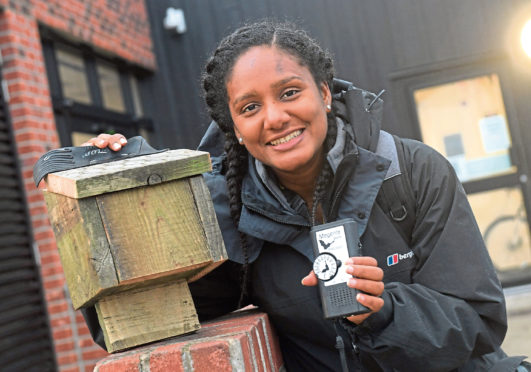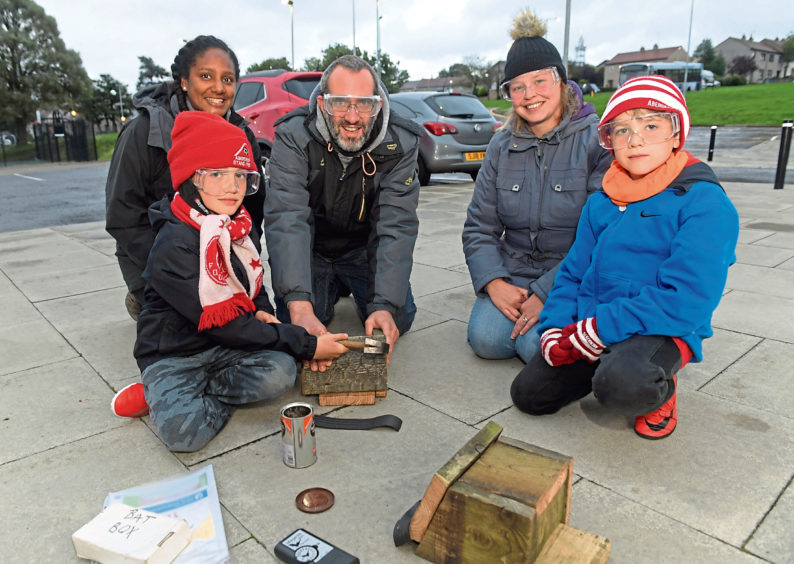If you listen carefully you can hear the soft beat of wings in the darkness, with the glimmer of streetlights only a few miles away.
Bats are elusive creatures with an air of mystery, perhaps because they are nocturnal and are therefore rarely seen.
With connotations to Dracula, it’s fair to say that bats are not the most popular of mammals, and the majority of people would not go in search of their roosting spot.
But urbanisation in part means bats are closer than we think, and you don’t need to visit a ruined castle in the north-east for your first bat experience.
Dozens of people have been encouraged to find out more about bats and their night-time activities by the work of one woman who is determined to dispel myths and educate people on the bat population in Aberdeen.
Adaica Rodriguez has been a community ranger for almost one year, and recently held several bat walks on the outskirts of the Granite City.
She is passionate about the conservation of bats, which are a protected species by law, and half of the bat species found in the UK reside in Scotland.
From building a bat roosting box to listening out for bats using special equipment, the walks have proved popular with a wide range of people.
And rather than heading for the lush countryside of Aberdeenshire, Adaica has been able to detect bats in the Middlefield area of Aberdeen.
We meet outside The Hub, which serves as the community centre for the area, before heading to a small thicket of woodland.
Adaica is armed with the materials needed to make roosting boxes, and is hopeful for some sightings.
“I can never guarantee that you will see bats, but there’s certainly a good chance,” she said.
“I think they are fascinating animals.
“If you don’t know what you’re looking for, it can be a very fleeting encounter.
“You might feel a quick flap and the bat is gone, it’s over in seconds.
“They tend to come out from sunset until sunrise, and bats can eat 3,000 insects in one night.
“That’s why they are such good indicators of the biodiversity in the area.
“If the bat population is strong, it suggests there is excellent wildlife and plenty of food available.
“You might not expect bats in a place like Middlefield, where there are houses and roads.
“But you’ll find pockets of nature in the city, you just need to know where to look.”
The walks have proved popular with people of all ages, and Adaica is keen to work with youngsters in particular.
“I love my job because every day is different, it enables me to engage with the community,” she said.
“One of my projects includes working with schools and nurseries on outdoor learning.
“Literacy and numeracy can be taught in the great outdoors, you can even apply multiplication to nature.
“I am part of a team that patrols 25 green spaces around the city, and I’ve been managing Auchmill Community Woodland and Heathryfold Park.
“It’s very exciting, but bats remain one of my big passions.”
There are 17 resident bat species found in the UK, with nine in Scotland.
According to the North East Scotland Biological Records Centre, seven species of bat can be found in Aberdeen and Aberdeenshire.
The most common species is the Common and Soprano Pipistrelle bat.
Less common is the Natterer’s bat, although it has been spotted in Broomfield and West Bandodle near Inverurie.
“Bats can live for up to 30 years. I think they’re really misunderstood creatures,” said Adaica.
“Maybe some people are scared of them, but they weigh less than a £1 coin.
“You’ll find around 75 bats in one bat roost, and that demonstrates how small they are.
“They hang upside down because it enables them to get away from predators quickly.
“Unlike birds, they can’t take off from the ground because they can’t get enough power in their wings.
“They’re remarkable animals though, and quite endearing.
“Pregnant females roost together and create their own little maternity home.
“My bat detector picks up different frequencies. I love listening in to all the sounds they make in the darkness.
“The noises they make sound like a series of clicks, it’s fascinating to hear how they communicate with each other.”
Adaica believes education is the way forward, and current legislation and conservation seems to have had a positive impact on the bat population.
“People have been so keen to learn about bats, and the records in Aberdeen are very encouraging,” she said.
“You might live in a built-up area, but urban wildlife is on your doorstep.
“Education enables people to make the very most of what nature has to offer, and the feedback from the bat walks has been brilliant.
“Even if bats aren’t your favourite animal, you can’t deny that they make excellent pest controllers.”

